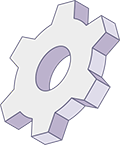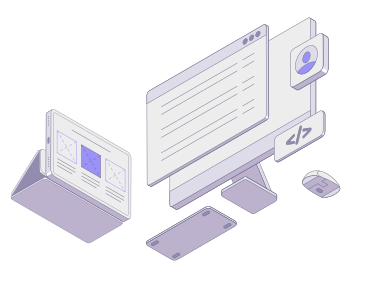




The Importance of CTAs in Conversion-Oriented Websites
In the world of digital marketing, a well-designed website is only effective if it successfully converts visitors into leads, customers, or subscribers. One of the most crucial elements in achieving this goal is the Call-to-Action (CTA). A CTA prompts users to take specific actions, guiding them through the buyer’s journey and ultimately leading to higher conversion rates. At Masthead Technology, we understand the pivotal role CTAs play in conversion-oriented websites. Here’s why CTAs are essential and how you can optimize them to maximize your website’s performance.
What is a CTA?
A Call-to-Action (CTA) is a prompt on a website that encourages users to take a specific action, such as signing up for a newsletter, downloading a resource, or making a purchase. CTAs are typically presented as buttons, links, or banners that stand out on the page, guiding users toward the next step in their journey.
The Importance of CTAs in Conversion-Oriented Websites
1. Driving User Engagement
Encouraging Interaction: CTAs play a crucial role in encouraging users to interact with your website. Without clear CTAs, visitors may not know what action to take next, leading to missed opportunities for engagement. By strategically placing CTAs throughout your site, you can guide users to explore more content, fill out forms, or make purchases.
Reducing Bounce Rates: Well-placed CTAs can help reduce bounce rates by encouraging users to stay on your site longer and explore additional pages. For example, a CTA inviting users to read a related blog post or download an e-book can keep visitors engaged and reduce the likelihood of them leaving your site prematurely.
2. Guiding Users Through the Conversion Funnel
Creating a Seamless Journey: CTAs guide users through the different stages of the conversion funnel, from awareness to decision. Each stage requires different CTAs, such as “Learn More” during the awareness stage, “Get a Free Trial” during the consideration stage, and “Buy Now” during the decision stage. By aligning CTAs with the user’s journey, you create a seamless path toward conversion.
Promoting Desired Actions: Whether you want users to sign up for a newsletter, download a whitepaper, or make a purchase, CTAs are the tools that prompt these actions. Clear and compelling CTAs make it easier for users to take the desired steps, increasing the likelihood of conversion.
3. Increasing Conversion Rates
Maximizing Opportunities: Every page on your website presents an opportunity to convert visitors into leads or customers. Effective CTAs ensure that these opportunities are not missed. By placing CTAs on key pages, such as the homepage, product pages, and blog posts, you can maximize your site’s conversion potential.
A/B Testing and Optimization: CTAs can be optimized through A/B testing to determine which versions perform best. Testing different text, colors, placements, and sizes allows you to refine your CTAs and improve conversion rates. For example, changing a CTA button from “Submit” to “Get Your Free Quote” might result in a higher conversion rate.
Best Practices for Effective CTAs
1. Clear and Compelling Language
Use Action-Oriented Text: The language of your CTA should be clear, concise, and action-oriented. Phrases like “Sign Up,” “Download Now,” “Get Started,” and “Learn More” are direct and tell users exactly what to do. The more specific and relevant the CTA, the more likely users are to click.
Create a Sense of Urgency: Incorporating urgency into your CTA text can encourage users to take immediate action. Phrases like “Limited Time Offer,” “Act Now,” or “Only a Few Left” create a sense of urgency that can drive quicker conversions.
2. Strategic Placement
Above the Fold: Place important CTAs above the fold (the area of the webpage that is visible without scrolling) to ensure they are immediately visible to visitors. This prime real estate is crucial for capturing attention and encouraging action.
Throughout the User Journey: Distribute CTAs throughout your website, ensuring they align with the user’s journey. For example, include CTAs at the end of blog posts, within product descriptions, and on landing pages. This strategic placement keeps users engaged and moving toward conversion.
3. Visual Design
Stand Out with Contrast: CTAs should stand out visually from the rest of the page. Use contrasting colors that draw attention to the CTA button or link. A CTA that blends in with the page is less likely to capture clicks.
Make It Clickable: Ensure that your CTA is easily clickable, especially on mobile devices. Use large buttons with clear, clickable areas that are easy to tap on smaller screens. The easier it is for users to click your CTA, the higher your conversion rates will be.
4. Personalization
Tailor CTAs to User Segments: Personalizing CTAs based on user segments or behavior can significantly improve conversion rates. For example, a returning visitor might see a CTA that says “Welcome Back! Continue Your Journey,” while a new visitor might see “Start Your Free Trial Today.”
Dynamic CTAs: Consider using dynamic CTAs that change based on user actions or preferences. For example, if a user has already signed up for your newsletter, the CTA could change to invite them to download a free resource instead.
Common CTA Mistakes to Avoid
1. Vague or Ambiguous Text
Be Specific: Avoid using vague text like “Click Here” or “Submit.” These CTAs don’t tell the user what they’re getting. Instead, use specific language that clearly communicates the value of the action, such as “Download Your Free Guide” or “Start Your 30-Day Free Trial.”
2. Overloading Pages with CTAs
Avoid Clutter: While CTAs are essential, overloading a page with too many can overwhelm users and dilute the impact of each one. Focus on one or two primary CTAs per page to guide users effectively without causing confusion.
3. Ignoring Mobile Users
Mobile Optimization: With a significant portion of web traffic coming from mobile devices, it’s crucial to optimize CTAs for mobile users. Ensure that buttons are large enough to tap easily and that text is readable on smaller screens.
Conclusion
Call-to-Actions (CTAs) are vital components of conversion-oriented websites, driving user engagement, guiding visitors through the conversion funnel, and ultimately increasing conversion rates. By using clear and compelling language, strategically placing CTAs, and optimizing their design, you can significantly enhance your website’s performance. Avoid common mistakes and continually test and refine your CTAs to achieve the best results. At Masthead Technology, we specialize in creating conversion-focused websites with effective CTAs that drive results. Contact us today to learn how we can help you optimize your website for maximum conversions.
FAQs
What is a CTA? A Call-to-Action (CTA) is a prompt on a website that encourages users to take a specific action, such as signing up for a newsletter, downloading a resource, or making a purchase.
Why are CTAs important for conversion-oriented websites? CTAs guide users through the conversion funnel, drive engagement, and increase conversion rates by prompting visitors to take desired actions.
How can I optimize my CTAs for better conversions? Use clear and compelling language, strategically place CTAs throughout your site, design them to stand out, and test different versions to find what works best.
What are common CTA mistakes to avoid? Avoid vague text, overloading pages with too many CTAs, and ignoring mobile optimization. Focus on clarity, simplicity, and user experience.
How can Masthead Technology help with CTAs on my website? We specialize in creating conversion-focused websites with effective CTAs that drive results. Contact us to learn how we can optimize your website for maximum conversions.

